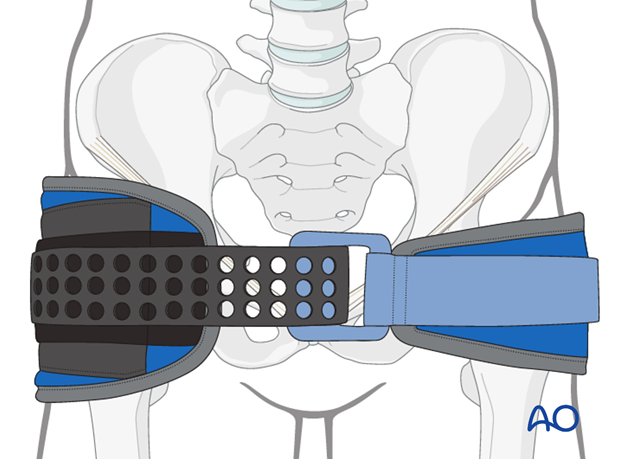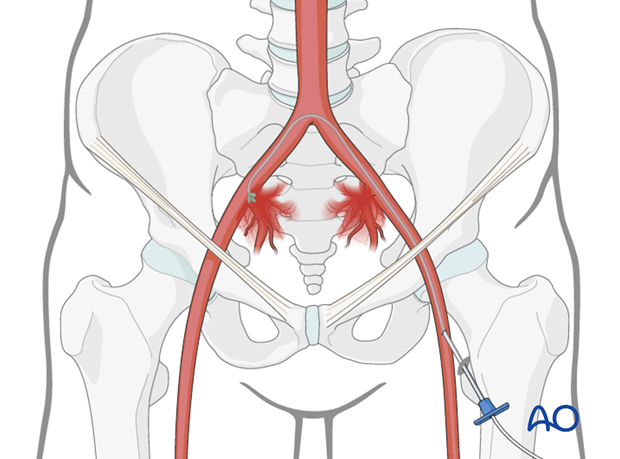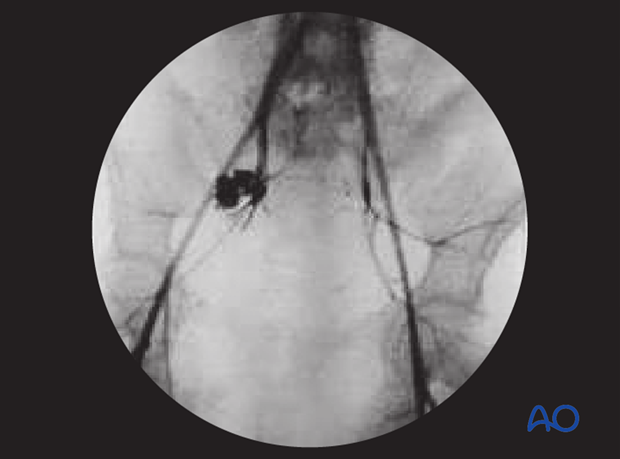Angio embolization
1. Packing versus angio-embolization
In an emergency situation the decision whether to go for packing or angiography with embolization depends on several factors.
- The condition of the patient
- When the patient is in extremis, angiography takes too long
- Availability of direct angiography or an operating room
- Availability of adequate personnel to perform angio-embolization
- When a laparotomy is mandatory, extraperitoneal packing could be part of the same procedure
Combining the two techniques (extraperitoneal pelvic packing and angio-embolization) is an option.
2. Embolization
Pelvic alignment and stabilization with temporary pelvic binder is performed prior to angiography.
Fluid replacement should be adequate, accepting permissive hypotension.

A catheter is placed in the femoral artery in the groin and arteriography is made via the femoral artery. All bleeding sites are identified and adequately embolized (pelvic binder removed for illustrative purposes only).

Control angiography should confirm successful control of bleeding.
Be aware of the risk of ischemia in the gluteal and perineal region.













